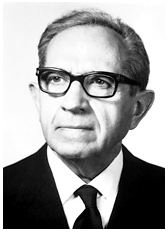Albert Claude: The Father of Cell Biology
Albert Claude - The Father of Cell Biology
Albert Claude was born in Longlier, Belgium in 1899. He studied medicine at the University of Liege, and moved to Berlin after earning his MD degree. In 1929 he joined the Rockefeller Institute. Years later, he won the Nobel prize for Physiology or Medicine in 1974.
He was accepted to the University of Liege despite not having earned a diploma. He was admitted through a special war veteran’s program. While at the University and throughout his career he was most interested in the most fundamental unit of all life forms: the cell. At this point of time not much was known about the components of the cell, since they could not be isolated individually and analysed. Albert Claude was interested in separating the components of the cells so that they could be studied in detail. His contributions to science, the fundamental study of cellular structure and function in particular, earned him the title of “Father of Cell Biology”.
Early Years and Research
After earning his MD degree from the University of Liege, he moved onto the Kaiser Wilhelm Institute in Berlin. In 1929 he moved to the United States in order to join the Rockefeller Institute as a researcher. At the Rockefeller Institute Claude worked in a group headed by James Murphy, who was studying the tumor agent Rous Sarcoma, a virus that primarily infects chickens. In 1948, Calude returned to Belgium to work as an administrator for the Université Libre de Bruxelles, where he developed a cancer research center.
Before Claude developed his method for fractionating cellular components (e.g., ultracentrifugation), the cell was considered to be a container enclosing a chaotic mass of cellular fluid. In his goal to isolate the viral particles from infected cells, Claude employed several crude pieces of equipment such as meat grinders and sieves to break down the cellular components to get to the viral particle. Unfortunately, he was never able to attain his goal of isolating the viral particles, but ended up separating the different components of the cell.
Key Findings from Albert Claude
Albert Claude’s contribution to science did not stop with the discovery of the cell fractionation method, which allowed researchers to study the components in detail. Once he achieved the ability to isolate cellular components, Claude wanted to study the components themselves. Claude, along with colleagues Drs. Hogeboom and Hotchkiss worked to locate “granules” in the cell which later turned out to become the Mitochondria.
Claude noted that the mitochondria contained enzymes for several functions of the cell associated with energy metabolism. Later, they proved that mitochondria serves as the “powerhouses” of the cell. Moving onto other research methodologies, Claude noticed that electron microscopy was becoming much more sophisticated but only applied to material sciences. Collaborating with Keith Porter and George Palade, Claude set out to study the cell under the electron microscope. This led to their identification of the enclosing region of the cell, called the Endoplasmic Reticulum. In 1970, Columbia University awarded them the Louisa Gross Horowitz prize for their work. In 1974, Claude, Palade and Christian de Duve were awarded the Nobel prize for Medicine or Physiology.
Claude passed away in 1983.
Image obtained from: https://nobelprize.org/nobel_prizes/medicine/laureates/1974/claude-autobio.html
